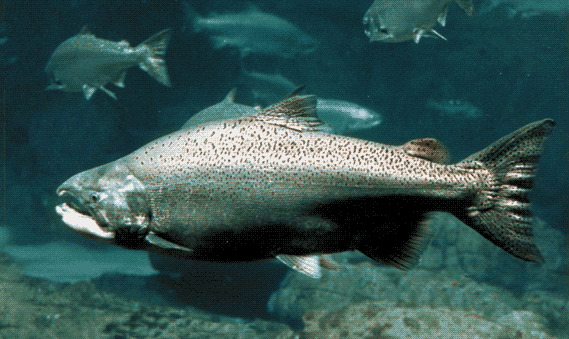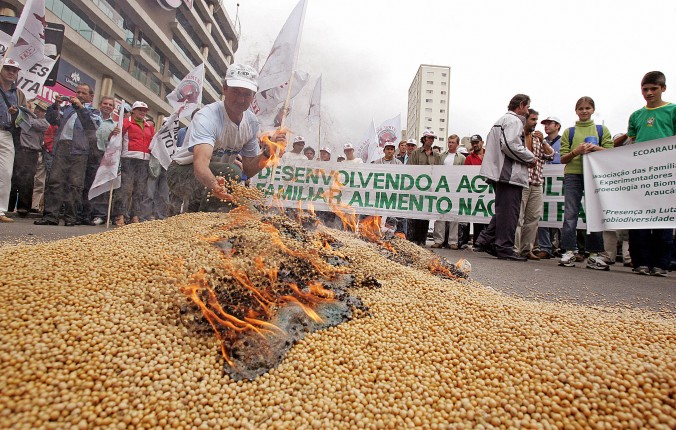
British Campaign to Fight GMO feed for Livestock that Produce Meat, Eggs and Dairy
Concerned citizens of the UK are pressuring their supermarkets to revert to requiring use of non-GMO feed, not just for poultry and eggs, but for ALL their livestock products. In April 2013 Tesco, Co-Op, Marks & Spencer, and Sainsbury’s announced that they would switch their egg and poultry production to genetically modified (GMO) feed, reportedly to save consumers a few pennies on animal products. But many shoppers are concerned about the human health implications of consuming animal products that were nourished with genetically modified food, and also the health effects for people living near the GM crops. Tune in and learn more about the campaign to stop GM livestock feed from entering the supply chain of UK supermarkets.
GMO Action Petition: gmoaction.org/petition
About GMO Action
GMO Action was set up by a loose international coalition of citizens concerned about GMOs. We are entirely supported by individual donations. We receive no money from corporations. We are very grateful to receive donations. Please use the donation button on the top right of this page.
GMO Action mission
We oppose the use of genetically modified (GM) crops in animal feed for the following reasons:
1. GM soy is sprayed with large amounts of Roundup, which causes health problems in the producer countries.
The production of GM soy in South America involves massive spraying with Roundup and other herbicides. The herbicides are sprayed from airplanes – a practice banned in Europe – or from giant tractors with long arms called “mosquitoes”. The spray drifts onto people’s houses and schools and gets into water courses. High levels of birth defects, infertility, miscarriages, cancer and other diseases are reported in sprayed areas.1 2 A certain amount of herbicide is likely to be used on all non-organic soy fields, whether the crop is GM or non-GM. But with non-GM soy, farmers have to use herbicide with caution, as too much will kill the crop as well as the weeds. Only GM soy is engineered to survive being sprayed with any amount of herbicide, so the need for caution is removed.
2. GM herbicide-tolerant crops lead to large increases in herbicide use, which is unsustainable.
The cultivation of GM herbicide-tolerant crops has led to large increases in the use of Roundup. This in turn has led to the spread of herbicide-resistant weeds, necessitating the use of ever-increasing quantities of Roundup and other herbicides3. The resulting chemical treadmill is unsustainable for farmers, consumers and the environment.
3. GM crops have been found to have toxic effects on laboratory and livestock animals.
A number of peer-reviewed studies show that GM crops have toxic effects on laboratory and livestock animals4. Farmers in Europe and the US have also reported health problems in livestock animals fed GM crops5 6. These effects may be due to the residues of pesticides such as Roundup, the GM crops themselves, or a combination of the two. The tests that industry carries out on its own GM crops to gain market approval are too weak and regulatory assessments are too flawed to ensure the safety of GM crops7
4. GM DNA from GM animal feed has been detected in the milk and meat that people eat.8 9 10 11
MicroRNAs (molecules that affect gene expression) from plants, when eaten, have been found to affect the gene expression of mice that ate the plants12. It is reasonable to expect that MicroRNAs from GM plants will also affect the gene expression of animals and humans that eat them, in ways that are not yet known.
GMO Action demands
In the short term:
- UK retailers must require their suppliers to remove GM ingredients from animal feed and to source non-GM feed, as many retailers in mainland Europe have already done.
- There is plenty of non-GM soy available from Brazil and India. Retailers simply need to express their firm demand in advance in order to secure supplies economically.
- In the transition period before all animal products are produced using non-GM feed, retailers should be transparent about which products are still produced using GM feed by labeling those products “produced with GM feed”.
In the medium to long term:
- UK and European farm policy must be reformed to end reliance on imported animal feed. This will involve changes in livestock farming such as:
- Growing our own protein crops for animal feed
- Shifting cattle back to eating grass and silage and keeping them outside for more of the year
- Favoring cattle breeds that need less protein, thrive on grass feed, and cope with outdoor conditions
- Shifting pigs back to eating wholesome human food waste – for example, the produce that is past its sell-by date from supermarkets, which is currently thrown away.
References
- Lopez SL, et al. (2012). Pesticides used in South American GMO-based agriculture: A review of their effects on humans and animal models. Advances in Molecular Toxicology. J. C. Fishbein and J. M. Heilman. New York, Elsevier. 6: 41–75.
- Vazquez MA and C Nota (2011). Report from the 1st national meeting of physicians in the crop-sprayed towns, Faculty of Medical Sciences, National University of Cordoba, August 27–28 2010, University Campus, Cordoba. Cordoba, Argentina, Faculty of Medical Sciences, National University of Cordoba
- Earth Open Source (2012). GMO Myths & Truths, Section 5. bit.ly/ZILXBd
- Earth Open Source (2012). GMO Myths & Truths, Section 3. bit.ly/ZILXBd
- GM Free Cymru (2012). GM soy linked to health damage in pigs – a Danish dossier.www.gmwatch.org/latest-listing/51-2012/13883
- Organic and Non-GMO report (2013). Demand growing for non-GMO corn seed. www.non-gmoreport.com/articles/january2013/Demand-growing-for-non-GMO-corn-seed.php
- Earth Open Source (2012). GMO Myths & Truths, Sections 2, 3. bit.ly/ZILXBd
- Mazza R (2005). Assessing the transfer of genetically modified DNA from feed to animal tissues. Transgenic Res 14(5): 775–784.
- Sharma R, et al. (2006). Detection of transgenic and endogenous plant DNA in digesta and tissues of sheep and pigs fed Roundup Ready canola meal. J Agric Food Chem 54(5): 1699–1709.
- Chainark P et al. (2008). Availability of genetically modified feed ingredient: investigations of ingested foreign DNA in rainbow trout Oncorhynchus mykiss. Fisheries Science 74: 380–390.
- Ran T, et al. (2009). Detection of transgenic DNA in tilapias (Oreochromis niloticus, GIFT strain) fed genetically modified soybeans (Roundup Ready). Aquaculture Research 40: 1350–1357.
- Zhang L, et al. (2012). Exogenous plant MIR168a specifically targets mammalian LDLRAP1: Evidence of cross-kingdom regulation by microRNA. Cell research 22(1): 107-126.


















